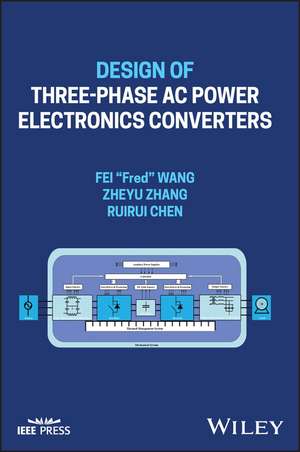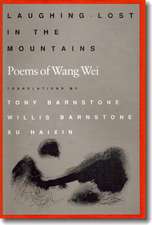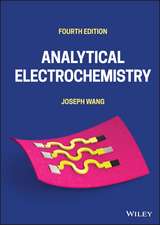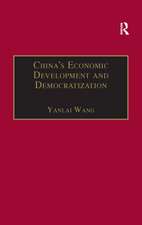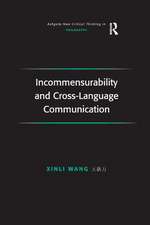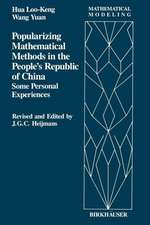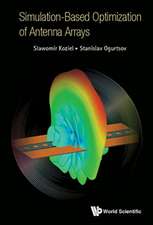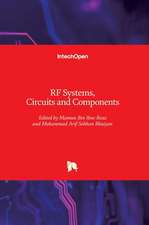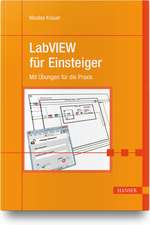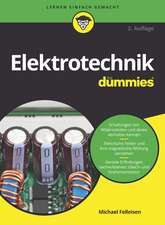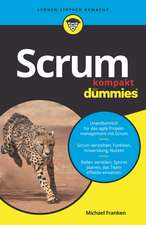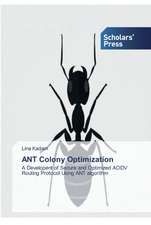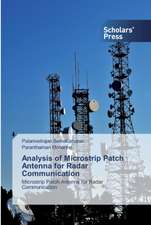Design of Three–phase AC Power Electronics Converters: IEEE Press
Autor Wangen Limba Engleză Hardback – 31 oct 2023
Din seria IEEE Press
- 5%
 Preț: 599.39 lei
Preț: 599.39 lei - 20%
 Preț: 684.17 lei
Preț: 684.17 lei - 24%
 Preț: 667.15 lei
Preț: 667.15 lei - 24%
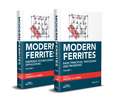 Preț: 1226.95 lei
Preț: 1226.95 lei - 24%
 Preț: 707.88 lei
Preț: 707.88 lei - 24%
 Preț: 702.63 lei
Preț: 702.63 lei - 24%
 Preț: 617.46 lei
Preț: 617.46 lei - 24%
 Preț: 600.44 lei
Preț: 600.44 lei - 24%
 Preț: 741.54 lei
Preț: 741.54 lei - 24%
 Preț: 706.13 lei
Preț: 706.13 lei - 24%
 Preț: 704.88 lei
Preț: 704.88 lei - 24%
 Preț: 695.87 lei
Preț: 695.87 lei - 24%
 Preț: 618.99 lei
Preț: 618.99 lei - 24%
 Preț: 546.25 lei
Preț: 546.25 lei - 14%
 Preț: 858.78 lei
Preț: 858.78 lei - 20%
 Preț: 446.58 lei
Preț: 446.58 lei - 24%
 Preț: 672.04 lei
Preț: 672.04 lei - 24%
 Preț: 612.66 lei
Preț: 612.66 lei - 24%
 Preț: 572.10 lei
Preț: 572.10 lei - 14%
 Preț: 743.46 lei
Preț: 743.46 lei - 23%
 Preț: 1031.28 lei
Preț: 1031.28 lei -
 Preț: 415.98 lei
Preț: 415.98 lei - 9%
 Preț: 1010.21 lei
Preț: 1010.21 lei - 9%
 Preț: 1499.89 lei
Preț: 1499.89 lei - 9%
 Preț: 806.07 lei
Preț: 806.07 lei - 9%
 Preț: 1069.47 lei
Preț: 1069.47 lei - 9%
 Preț: 1117.45 lei
Preț: 1117.45 lei - 20%
 Preț: 723.20 lei
Preț: 723.20 lei - 9%
 Preț: 923.82 lei
Preț: 923.82 lei - 9%
 Preț: 994.01 lei
Preț: 994.01 lei - 9%
 Preț: 963.51 lei
Preț: 963.51 lei - 9%
 Preț: 1969.97 lei
Preț: 1969.97 lei - 9%
 Preț: 1021.22 lei
Preț: 1021.22 lei - 9%
 Preț: 742.90 lei
Preț: 742.90 lei - 9%
 Preț: 1485.82 lei
Preț: 1485.82 lei - 9%
 Preț: 1020.25 lei
Preț: 1020.25 lei - 9%
 Preț: 930.31 lei
Preț: 930.31 lei - 9%
 Preț: 997.70 lei
Preț: 997.70 lei - 9%
 Preț: 970.56 lei
Preț: 970.56 lei - 9%
 Preț: 781.15 lei
Preț: 781.15 lei - 9%
 Preț: 1162.23 lei
Preț: 1162.23 lei - 9%
 Preț: 1030.34 lei
Preț: 1030.34 lei - 9%
 Preț: 815.85 lei
Preț: 815.85 lei - 9%
 Preț: 1130.31 lei
Preț: 1130.31 lei - 9%
 Preț: 1560.74 lei
Preț: 1560.74 lei - 9%
 Preț: 1289.30 lei
Preț: 1289.30 lei - 9%
 Preț: 1036.75 lei
Preț: 1036.75 lei - 9%
 Preț: 968.96 lei
Preț: 968.96 lei - 9%
 Preț: 1130.63 lei
Preț: 1130.63 lei - 9%
 Preț: 1010.82 lei
Preț: 1010.82 lei
Preț: 784.11 lei
Preț vechi: 861.66 lei
-9% Nou
Puncte Express: 1176
Preț estimativ în valută:
150.06€ • 156.08$ • 123.88£
150.06€ • 156.08$ • 123.88£
Carte tipărită la comandă
Livrare economică 14-28 aprilie
Preluare comenzi: 021 569.72.76
Specificații
ISBN-13: 9781119794233
ISBN-10: 1119794234
Pagini: 688
Dimensiuni: 178 x 254 x 40 mm
Greutate: 1.4 kg
Editura: Wiley
Seria IEEE Press
Locul publicării:Hoboken, United States
ISBN-10: 1119794234
Pagini: 688
Dimensiuni: 178 x 254 x 40 mm
Greutate: 1.4 kg
Editura: Wiley
Seria IEEE Press
Locul publicării:Hoboken, United States
Notă biografică
Fei "Fred" Wang, PhD, is a Professor and Condra Chair of Excellence in Power Electronics at the Min H. Kao Department of Electrical Engineering and Computer Science, the University of Tennessee, Knoxville. Zheyu Zhang, PhD, is Warren H. Owen-Duke Energy Assistant Professor of Engineering at Holcombe Department of Electrical and Computer Engineering with the Zucker Family Graduate Education Center at Clemson University's Charleston Innovation Campus. Ruirui Chen, PhD, is a research assistant professor at the Min H. Kao Department of Electrical Engineering and Computer Science), the University of Tennessee, Knoxville.
Cuprins
About the Authors xiii Preface xv Acknowledgments xvii 1 Introduction 1 1.1 Basics of Three-Phase AC Converters 1 1.2 Basics of Three-Phase AC Converter Design 20 1.3 Goal and Organization of This Book 26 Part I Components 31 2 Power Semiconductor Devices 33 2.1 Introduction 33 2.2 Static Characteristics 35 2.3 Switching Characteristics 50 2.4 Thermal Characteristics 57 2.5 Other Attributes 60 2.6 Scalability (Parallel/Series) 68 2.7 Relevance to Converter Design 70 2.8 Summary 72 3 Capacitors 75 3.1 Introduction 75 3.2 Capacitor Types and Technologies 75 3.3 Capacitor Selection in a Converter Design 82 3.4 Capacitor Characteristics and Models 84 3.5 Capacitor Bank (Parallel/Series) 98 3.6 Relevance to Converter Design 100 3.7 Summary 102 4 Magnetics 105 4.1 Introduction 105 4.2 Magnetic Core Materials and Construction 105 4.3 Inductor Design in a Converter 108 4.4 Inductor Characteristics and Models 110 4.5 Relevance to Converter Design 127 4.5.1 Capacitor Winding Capacitance 127 4.6 Summary 128 Part II Subsystems Design 131 5 Passive Rectifiers 133 5.1 Introduction 133 5.2 Passive Rectifier Design Problem Formulation 135 5.3 Passive Rectifier Models 140 5.4 Passive Rectifier Design Optimization 157 5.5 Interface to Other Subsystem Designs 161 5.6 Summary 164 6 Load-side Inverters 167 6.1 Introduction 167 6.2 Load-side Inverter Design Problem Formulation 167 6.3 Load-side Inverter Models 173 6.4 Load-side Inverter Design Optimization 230 6.5 Load-side Inverter Interfaces to Other Subsystem Designs 236 6.6 Summary 241 7 Active Rectifiers and Source-side Inverters 245 7.1 Introduction 245 7.2 Active Rectifier and Source-side Inverter Design Problem Formulation 245 7.3 Active Rectifier and Source-side Inverter Models 251 7.4 Active Rectifier and Source-side Inverter Design Optimization 280 7.5 Impact of Topology 280 7.6 Active Rectifier and Source-side Inverter Interfaces to Other Subsystem Designs 300 7.7 Summary 300 8 EMI Filters 305 8.1 Introduction 305 8.2 EMI Filter Design Basics 306 8.3 EMI Filter Design Problem Formulation 324 8.4 EMI Filter Models 326 8.5 EMI Filter Design Optimization and Some Practical Considerations 343 8.6 EMI Noise and Filter Reduction Techniques 353 8.7 Interface to Other Subsystem Designs 365 8.8 Summary 366 9 Thermal Management System 369 9.1 Introduction 369 9.2 Cooling Technology Overview 369 9.3 Thermal Management System Design Problem Formulation 384 9.4 Thermal Management System Models 388 9.5 Thermal Management System Design Optimization 393 9.6 Thermal Management System Interface to Other Subsystems 397 9.7 Other Cooling Considerations 400 9.8 Summary 407 10 Control and Auxiliaries 411 10.1 Introduction 411 10.2 Control Architecture 411 10.3 Control Hardware Selection and Design 414 10.4 Isolation 415 10.5 Gate Driver 418 10.6 Sensors and Measurements 430 10.7 Protection 445 10.8 Printed Circuit Boards 452 10.9 Deadtime Setting and Compensation 455 10.10 Interface to Other Subsystems 466 10.11 Summary 467 11 Mechanical System 471 11.1 Introduction 471 11.2 Mechanical System Design Problem Formulation 475 11.3 Busbar Design 482 11.4 Mechanical System Interface to Other Subsystems 502 11.5 Summary 504 12 Application Considerations 507 12.1 Introduction 507 12.2 Motor Drive Applications 507 12.3 Grid Applications 547 12.4 Summary 577 Part III Design Optimization 581 13 Design Optimization 583 13.1 Introduction 583 13.2 Design Optimization Concept and Procedure 583 13.3 Optimization Algorithms 587 13.4 Partitioned Optimizers vs. Single Optimizer for Converter Design 590 13.5 Design Tool Development 596 13.6 Virtual Prototyping 638 13.7 Summary 642 References 643 Index 647
